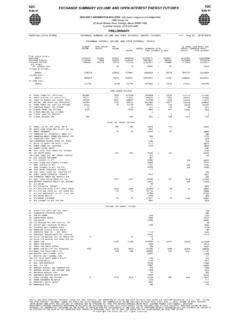Transcription of Quality Measures Are My Friends - pacahpa.org
1 Quality Measures Are My Friends Advantage Home Health Services | AdvantageCare Rehabilitation Kathy Kemmerer, NAC, RAC-CT , CPRA. Nurse Consultant / CMI Specialist & Medicare Reimbursement Specialist Dave Lishinsky, PT. VP of Clinical Compliance Disclaimer Please note that this presentation is for informational purposes only. The information is intended for the recipient's use only and should not be cited, reproduced or distributed to any third party without the prior consent of the authors. Although great care is taken to ensure accuracy of information neither the authors, nor the Advantage companies can be held responsible for any decision made on the basis of the information cited. No one should act upon such information without appropriate professional advice after a thorough assessment of the individual situation. 2. Objectives 1. Learn the impact of Quality Measures on the 5- star rating.
2 2. Learn some definitions needed to understand the Quality Measure. 3. Learn each Quality measure's meaning, scoring process (exclusions), results, and common coding errors that place a resident in a Quality measure unnecessarily. 4. Learn which therapy clinical programs can support the facility's Quality Measures scores. 3. QM and the 5- star Quality Rating System QMs Measures based on MDS and claims-based Quality Measures Facility ratings for the Quality Measures are based on performance on 16 of the 24 QMs that are currently posted on the Nursing Home Compare web site, and that are based on MDS assessments as well as hospital and emergency department claims. Nursing Home Compare displays information on facility ratings for each of the 3 domains [Health inspections, staffing (RN and total staffing hours (RN+LPN+CNA. hours), and QMs]. 4. QM and the 5- star Quality Rating System Quality Measure Domain The facility rating for the QM domain is based on its performance on a subset of 13 (out of 24) of the MDS- based QMs and three MDS and Medicare claims based Measures currently posted on Nursing Home Compare Percent of residents whose need for help with ADL.)
3 Has increased (LS). Percent of residents whose ability to move independently worsened (LS). 5. ADL Coding QM based on CNA ADL Documentation Independent (0). I don't have to watch the resident. He/she does the task alone. Supervision (1). I must watch and/or talk to the resident to do the task. I do not touch him/her. Limited Assist (2). I touch or guide the resident to do the task. I don't push, pull or lift the resident. Extensive Assist (3). I use my muscle to help the resident do the task. Complete Assist (4). I do everything for the resident to do the task. 6. QM and the 5- star Quality Rating System Quality Measure Domain Long Stay Percent of high risk residents with PU. Percent of residents who have/had a catheter inserted and left in their bladder Percent of residents who were physically restrained Percent of residents with a UTI. Percent of residents who self-report moderate to severe pain Percent of residents experiencing one or more falls with major injury Percent of residents who received an antipsychotic 7.
4 Medication QM and the 5- star Quality Rating System Quality Measure Domain Short Stay Percent of residents whose physical function improves from admission to discharge Percent of residents with PU that are new or worsened Percent of residents who self-report moderate to severe pain Percent of residents who newly received an antipsychotic medication 8. QM and the 5- star Quality Rating System Claims based QMs used in the 5- star QRS. Percent of short-stay residents who were successfully discharged to the community Percent of short-stay residents who have had an outpatient emergency department visit Percent of short-stay residents who were re- hospitalized after a nursing home admission 9. Definitions: Cumulative days in facility (CDIF). The total number of days within an episode during which the resident was in the facility. It is the sum of the number of days within each stay included in an episode.
5 If an episode consists of more than one stay separated by periods of time outside the facility ( , hospitalizations), only those days within the facility would count towards CDIF. Any days outside of the facility ( , hospital, home, etc.) would not count towards the CDIF. total. 10. Definitions: Short Stay Confusing because of multiple meanings of short stay Short Stay MDS. Short Stay Resident Short Stay QM. Short Stay QM is an episode where the resident is physically in the bed at the SNF overnight for less than or equal to 100 days A short stay QM can span more than 100 calendar days because days outside of the facility are not counted in defining a 100-day or less short stay episode. Long Stay Long Stay QM is an episode where the resident is physically in the bed at the SNF overnight for 100 days or more 11. Definitions: Special rules for influenza vaccination Measures .
6 Influenza vaccination Measures are calculated only once per 12-month influenza season, which begins July 1 of a given year and ends on June 30 of the subsequent year. For these Measures , the target period begins on October 1 and ends on March 31. This means that the end-of-episode date will be March 31 for an episode that is ongoing at the end of the influenza season and that March 31 should be used as the end date when computing CDIF and for classifying stays as long or short for the influenza vaccination Measures . 12. Definitions: Entry tracking form (MDS form). Complete this MDS tracker every time : The resident has never been admitted to the facility (a new admission). or The resident was in the facility prior to the entry date and The last MDS assessment was a Discharge return not anticipated assessment Or The last assessment was a Discharge return anticipated assessment but the resident was out of the facility more than 30.
7 Days This tracking form is important to the count of the number of days the resident has been in your facility (short stay (less then or equal to 100 days) / long stay (greater then 100 days) for QM purposes). 13. Therapy's Role Strong clinical programs, outcomes tracking, and frequent audits Achieve resident's optimal physical, mental, and psychosocial functioning Promotes Quality of life Clinical Programming starts with a LTC Advocacy philosophy Education, training, and implementing an IDT. communication and referral system Nursing Therapy All SNF departments 14. Therapy's Role Core Programs LTC Advocacy Care Intensity Documentation Jimmo Skilled Maintenance 15. LTC Advocacy Program Patient ID Methods: ADL Index Reports Program Champions QI/QM (CASPER & 5 star ) Reports 24 Hour Report Incident Reports Weight Loss Reports RNA / RNP Communication Activities Communication Walking Rounds (Dining Room, Activities).
8 Facility Referral Program Advocacy Philosophy Ongoing Clinical Program Implementation, E&T, and Auditing 16. LTC Advocacy Program OBRA mandates that we provide every resident the necessary services to attain or maintain the highest practicable physical, mental and psychosocial well being.. Jimmo v Sebelius 17. LTC Advocacy Program If a resident is reported to have had a fall, change is socialization, change in eating pattern, skin breakdown, mobility change, or ADL participation, etc., there is a change/decline that therapy needs to address Remember, every resident deserves the chance to maintain or return to their PLOF through skilled therapy intervention. We need to complete a thorough evaluation to determine how therapy can assist 18. LTC Advocacy Program 19. Therapy Clinical Programs Functional Treatments RNPs Person-centered PLOF / Wellness DC. B & B / Incontinence ADLs Dining Cognition / Dementia Seating & Positioning Physical Agent Modalities Behavior Management Restraint Reduction Dysphagia Wound Care Contracture Management Falls Prevention / Splinting Pain Management Aug / Alt Communication Low Vision 1.
9 Best Practices IDT Communication / Collaboration Quarterly Screens / Rounds Nursing Therapy Referral System Comprehensive therapy evaluation including standardized tests & Measures Quarterly in-services All Shifts Resident / family / nursing E &T (carryover). Flexible therapy schedules / Extended hours Person-centered care / Preferences Home Exercise Programs Wellness Programs Functional Outcomes & Clinical Program Audits 21. 5 star Long-Stay QMs 22. Quality Measure Percent of Residents Whose Need for Help with Activities of Daily Living Has Increased (Long Stay). This Quality Measure is calculated as the percentage of residents with decline in late-loss activities of daily living (ADL) self-performance, referred to as an increased need for help with these ADLs, by comparing the target and prior assessments. An increase in need for help with ADLs is defined as an increase in two or more coding points, such as from Supervision to Extensive; in one late-loss ADL item, or one point increase, such as from Limited to Extensive, in two or more late-loss ADL items.
10 The late-loss ADLs bed mobility, eating, transfers, and toilet use have been selected for this measure because they are the ones that tend to be lost last. As a result, functional decline in these areas provides significant information about the resident's status. 23. Quality Measure Percent of Residents Whose Need for Help with Activities of Daily Living Has Increased (Long Stay). Exclusions All four of the late-loss ADL items indicate total dependence on the prior assessment, as indicated by: Bed mobility (G0110A1) = [4, 7, 8] and Transferring (G0110B1) = [4, 7, 8] and Eating (G0110H1) = [4, 7, 8] and Toilet use (G0110I1) = [4, 7, 8]. Three of the late-loss ADLs indicate total dependence on the prior assessment, as in #1, and the fourth late-loss ADL indicates extensive assistance (value 3) on the prior assessment If resident is comatose (B0100 = [1, - ]) on the target assessment Prognosis of life expectancy is less than 6 months (J1400 = [1, - ]) on the target assessment Hospice care (O0100K2 = [1, - ]) on the target assessment Bed mobility (G0110A1) = [ - ] on the prior or target assessment, or Transferring (G0110B1) = [ - ] on the prior or target assessment, or Eating (G0110H1) = [ - ] on the prior or target assessment, or Toilet use (G0110I1) = [ - ] on the prior or target assessment 24.
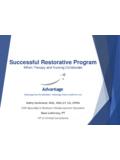
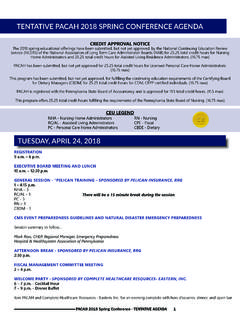


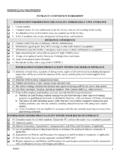
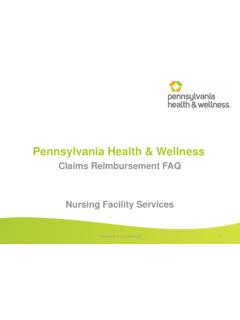



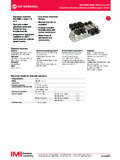

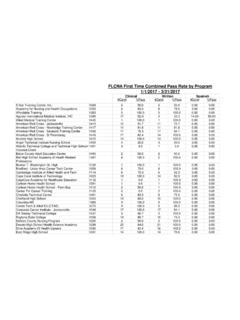
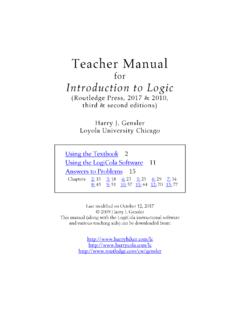
![Writing Your QAPI Plan [Read-Only] - LeadingAge …](/cache/preview/b/9/9/8/2/3/f/a/thumb-b99823fa2ae9636b8ed3230c56f78051.jpg)
